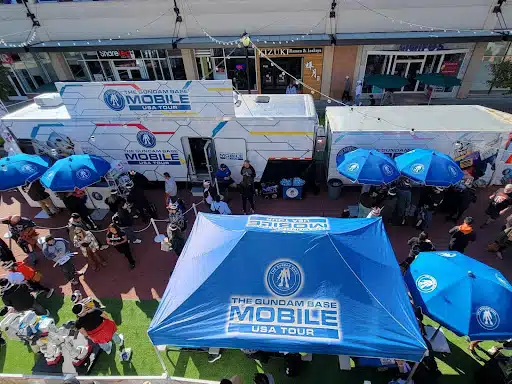Television commercials used to be the pinnacle of marketing. Families and friends gathered around the TV — their attention nearly undivided — with brands prominently on display. These days, you’re lucky if just one pair of eyes in a room full of people watches your commercial. After all, the dwindling number of people who still watch live TV spend commercial breaks glued to their phones.
If today’s brands want to truly get their audience’s attention, they have to earn it. Not even the most creative passive advertisements can inspire audience members to take action in droves. According to eMarketer, total ad spend on TV will drop below 30% by 2021, and Ericsson reports that nearly two-thirds of viewers check their smartphones and tablets while they watch TV. 
People crave real connections, but brands continually fail to provide them. The era of these passive ads has passed. It’s time for brands to quit sitting on the sidelines and start providing experiences audiences want.
Reaching the Right Mind at the Right Time
Maybe I was a bit too hard on commercials. I can remember a time in my life when a TV commercial actually influenced a purchase — and made me a lifelong customer.
When my kids were born, I started to see their safety in an entirely new light. During that exciting time, I saw a Volvo advertisement on TV that appeared to be tailored just to me. A kid sat safely in the back seat while his father drove confidently in the front, and a voice-over touted the best safety features on the market. It also asked a poignant question: “If gold and silver travel in armored cars, how do we protect a child’s dreams?”
That ad worked because its message spoke directly to my needs at a time when my mind was open to hearing it. I didn’t feel a connection to Volvo but to the safety features it espoused. Well-coordinated experiences, on the other hand, leave no doubt as to which brand is center stage and whether its audience is actually paying attention. What if, instead of a commercial, Volvo caught me with a safety demonstration near (or at) a dealership?
Great experiences reach people when their minds are open to receiving them. My mind was focused on safety because of my personal situation, but location is another powerful tool for brands sending out a message. Why else do you think Sam’s Club and Costco give out samples? Shoppers are already buying food, and they’re hungry — ideal conditions for any company selling snacks.
When we worked with Snapple to promote its Straight Up Tea product, we used the same logic to great success. By approaching thirsty people at festivals, 5K runs, farmers markets, and other places where the heat was inescapable, we managed to hand out more than 500,000 ice-cold bottles. Even people who weren’t huge tea drinkers gave it a shot (because free tea!). Not everyone converted, but many enjoyed the sample and went on to tell their friends that Snapple makes tea that even non-tea drinkers can enjoy.
Experiences — rather than out-of-context ads — are what successfully reach consumers. We have enough flashing lights to ignore. The brands that reach past the noise and offer real connections are the ones consumers want to learn about.
How to Grab Attention — and Keep It
Decades of designing impactful brand experiences has taught me three great practices for grabbing, keeping, and capitalizing on consumers’ attention. By following these tips, your brand can create its own experiential formula:
- Give your audience a reason to tune in. People at Sam’s Club buy food because they get free samples without a sense of pressure. They avoid the cellphone or cable salesperson a few feet away because the interaction is intrusive. Don’t give people chores and promises — offer them immediate incentives to connect.
Swag works well for this, but make sure your swag is actually useful. Think about the sheer number of branded pens you’ve stashed in a barely used drawer. Technology companies giving out USB flash drives and outdoor brands distributing free sunscreen have the right idea.
- Appeal to all the senses. It’s no surprise that people like to see and touch real stuff. Instead of keeping experiences behind a curtain, invite audiences into the fold. Let them put their hands on the products, take pictures with their friends, and immerse themselves in what your brand offers.
Experiences geared in virtual reality and augmented reality are great examples of this. People love engaging with advanced technology — even more so when that tech connects to other experiences. AT&T, for example, stole the show at the NCAA’s Final Four Fan Fest this year through AR-powered basketball games with a “Game of Thrones” twist.
- Create the perfect aha moment. Consumers love experiences, but brands want them to take the leap from enjoyment to purchase. At the very least, there should be continued engagement of some kind. Accomplish this goal by helping attendees see exactly how much your product could impact their daily lives. For instance, a few years ago, BMW invited a select group of target customers to get behind the wheel of its new sports car. After they finished zooming from zero to 60 mph, a quarter of attendees bought a new car.
And when we helped Fiskars sell pruning tools, we didn’t show people the sharpness of the blades — we let them prune pieces of wood. When consumers saw how easy it was to use a pair of Fiskars pruners compared to alternatives, they experienced an aha moment and instantly understood the superiority.
Experiences do what passive ads cannot. The more digital the world becomes, the more people crave those hands-on opportunities to engage with reality. Give them that, and they’ll really listen to what you have to say.
Want to learn more? Download a free chapter of our book – Brand Experiences: Building Connections in a Digitally Cluttered World at www.steve-randazzo.com to learn about other successful experiences and tried-and-tested ways to design your own.





